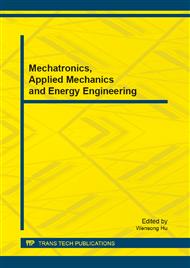p.566
p.571
p.579
p.585
p.591
p.597
p.605
p.612
p.617
The Research on Mechanism of Contre-Coup Injury in Brain Decelerating Impact Based on Trolley Experiment
Abstract:
Based on the platform of trolley equipment, this paper used a liquid containing gas as a sensor to establish a new testing method in order to simulate the mechanism of contre-coup injury during head decelerating impact. After pouring the liquid containing gas into the transparent skull model, the head model was sealed and fixed to the trolley. Then the trolley was trigged to impact the counterguard as the speed of 50km/h, the impacting course was recorded by a high-speed camera at the same time. Finally, the movement of the gas in the liquid during the impact was analyzed using the sequence pictures analyzing software as to ensure the area of negative pressure which appeared during the impact. The results showed that in the head decelerating impact the negative pressure can appear at the contre-coup site. This denoted that in the traffic accidents brain tissue of driver or passengers may suffer from tension injury at the contre-coup point. This paper provides a new equipment and method to research the biomechanical mechanism of contre-coup injury in traffic accidents which is helpful to understand the distribution of negative pressure in brain tissue during head decelerating impact.
Info:
Periodical:
Pages:
617-621
Citation:
Online since:
September 2013
Keywords:
Price:
Сopyright:
© 2013 Trans Tech Publications Ltd. All Rights Reserved
Share:
Citation:


